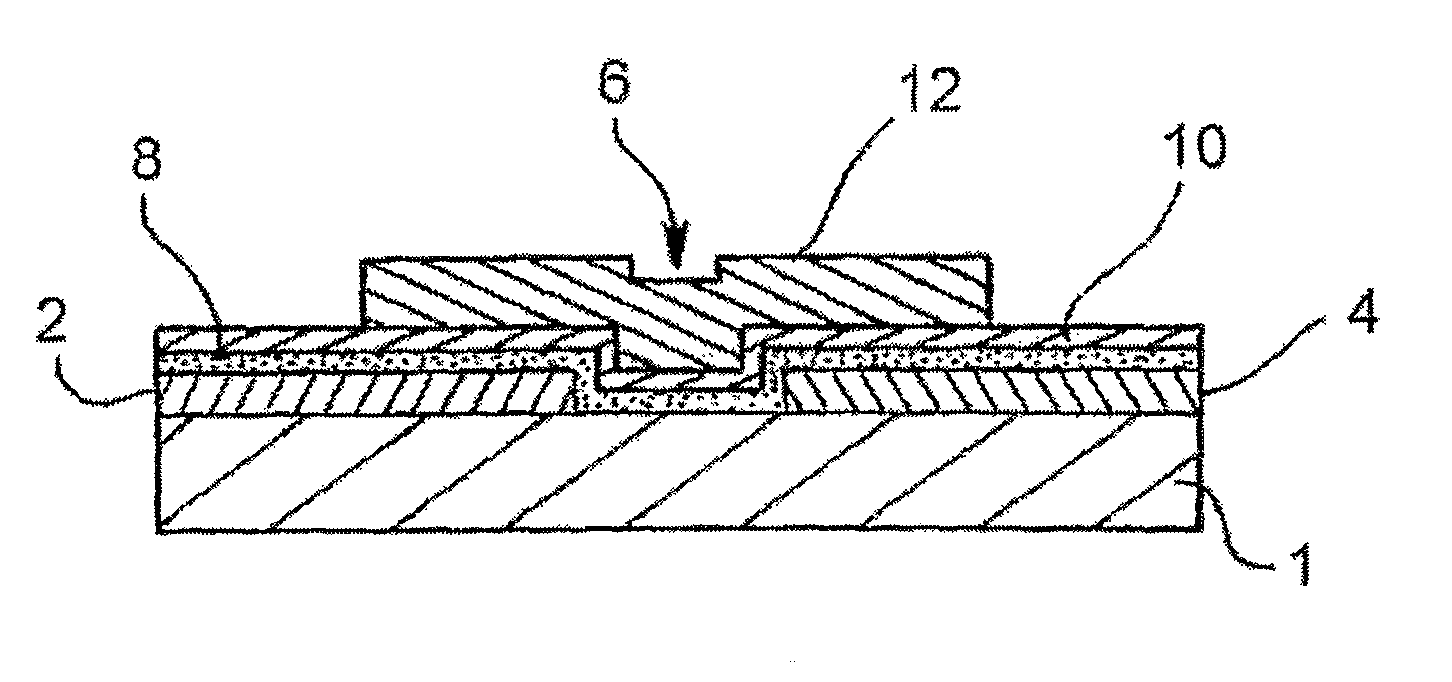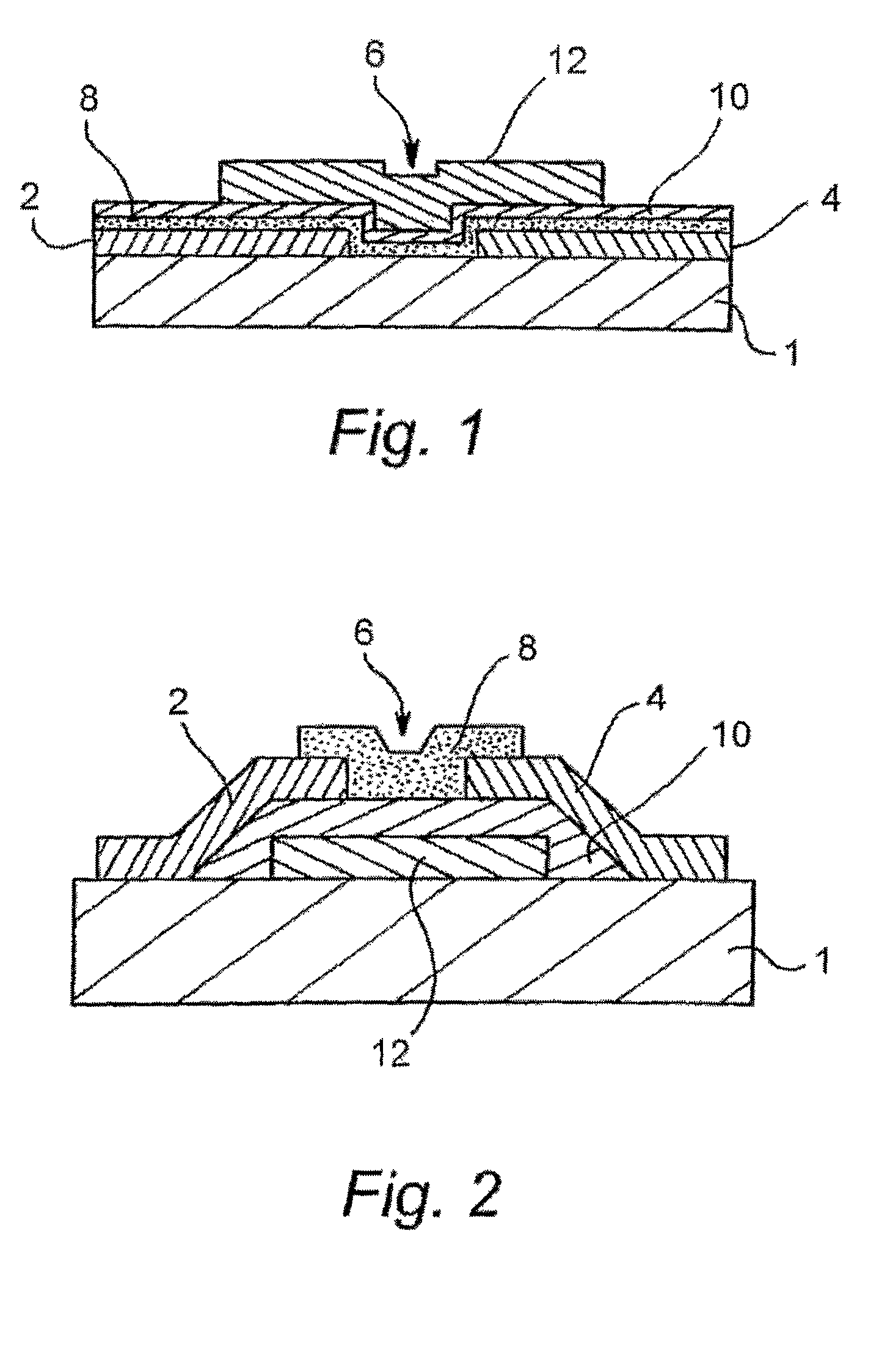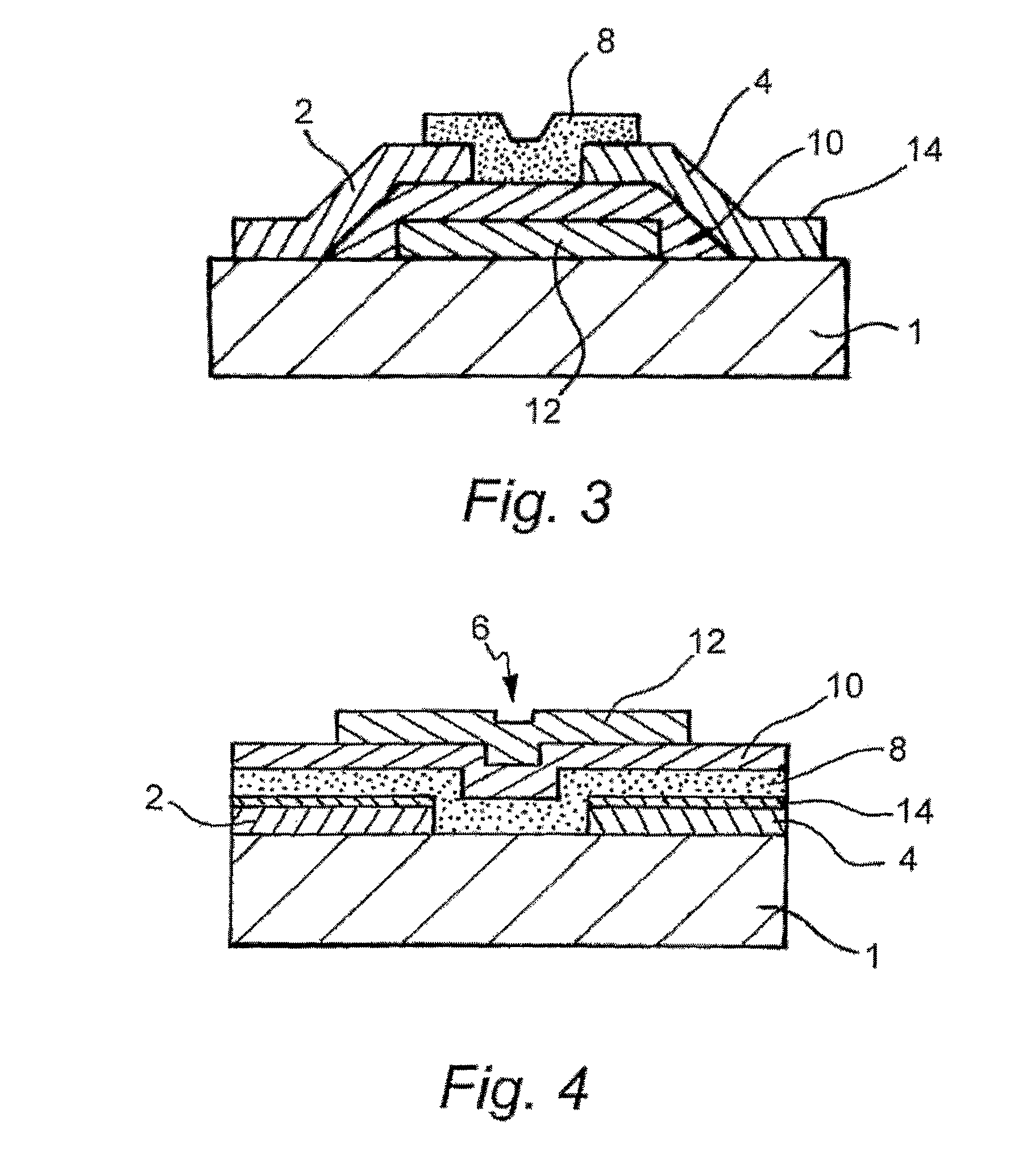Organic thin film transistors and methods of making the same
a thin film transistor and organic technology, applied in the direction of solid-state devices, semiconductor devices, thermoelectric devices, etc., can solve the problems of not being perfectly matched for a desired osc, many of these materials may be expensive, and the type of material used for source and drain electrodes is still relatively restricted
- Summary
- Abstract
- Description
- Claims
- Application Information
AI Technical Summary
Benefits of technology
Problems solved by technology
Method used
Image
Examples
Embodiment Construction
[0046]FIG. 3 shows a bottom-gate organic thin film transistor according to an embodiment of the present invention. The structure is similar to the prior art arrangement shown in FIG. 2 and for clarity like reference numerals have been used for like parts. The key difference between the arrangement shown in FIG. 3 is that the source and drain electrodes 2, 4 have disposed thereon a thin self-assembled layer of a material 14 comprising a dopant moiety having a redox potential of at least 0.3 eV relative to a saturated calomel electrode (SCE) in acetonitrile.
[0047]FIG. 4 shows a top-gate organic thin film transistor according to an embodiment of the present invention. The structure is similar to the prior art arrangement shown in FIG. 1 and for clarity like reference numerals have been used for like parts. Again, the key difference between the arrangement shown in FIG. 4 is that the source and drain electrodes 2, 4 have disposed thereon a thin self-assembled layer of a material 14 comp...
PUM
| Property | Measurement | Unit |
|---|---|---|
| conductivity | aaaaa | aaaaa |
| workfunction | aaaaa | aaaaa |
| workfunction | aaaaa | aaaaa |
Abstract
Description
Claims
Application Information
 Login to View More
Login to View More - R&D
- Intellectual Property
- Life Sciences
- Materials
- Tech Scout
- Unparalleled Data Quality
- Higher Quality Content
- 60% Fewer Hallucinations
Browse by: Latest US Patents, China's latest patents, Technical Efficacy Thesaurus, Application Domain, Technology Topic, Popular Technical Reports.
© 2025 PatSnap. All rights reserved.Legal|Privacy policy|Modern Slavery Act Transparency Statement|Sitemap|About US| Contact US: help@patsnap.com



